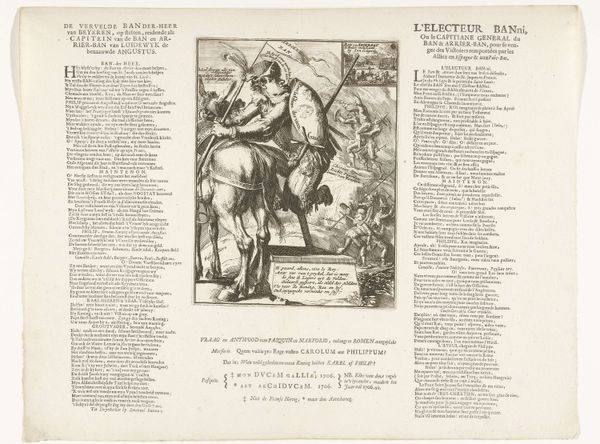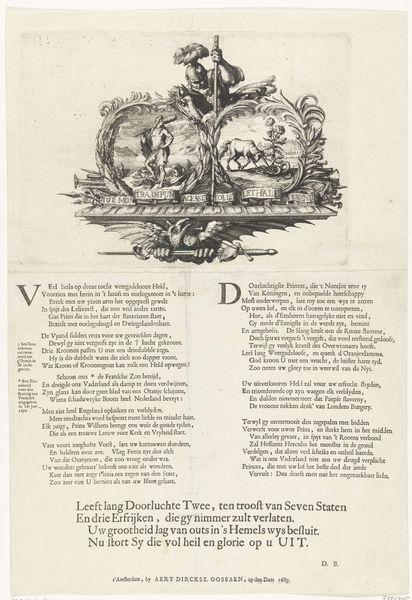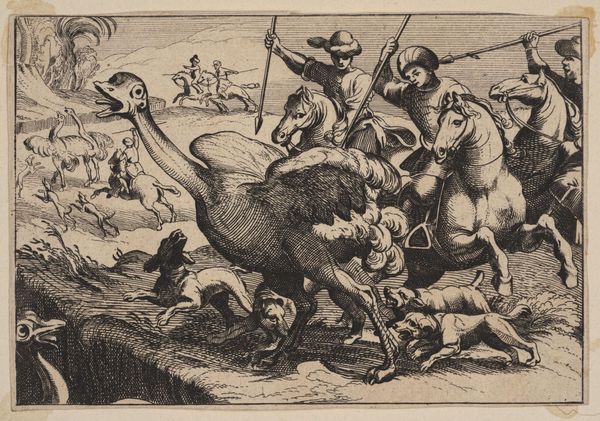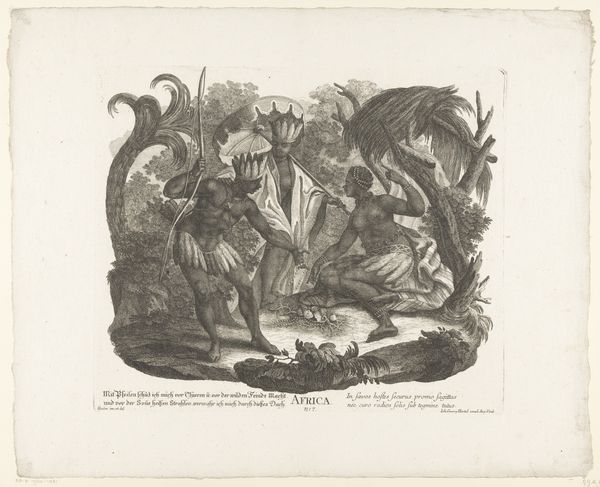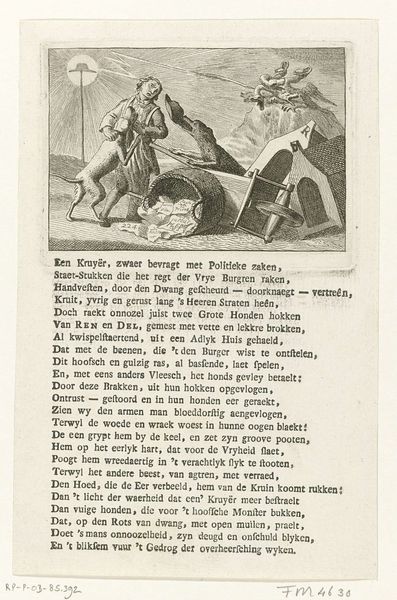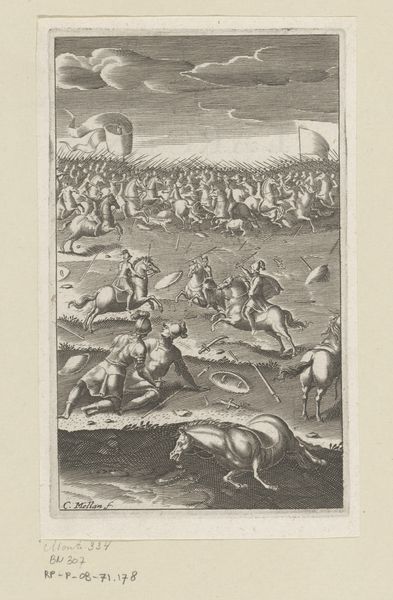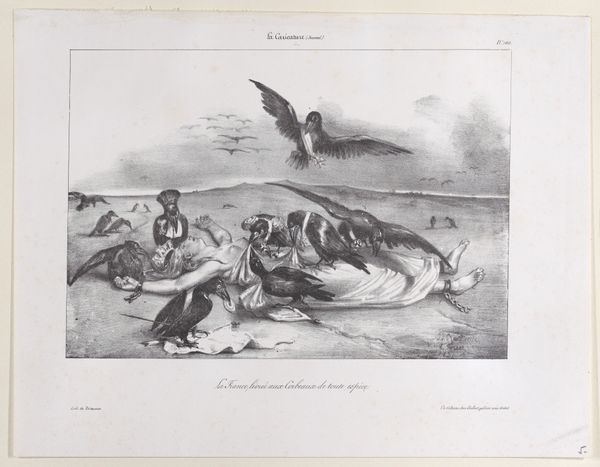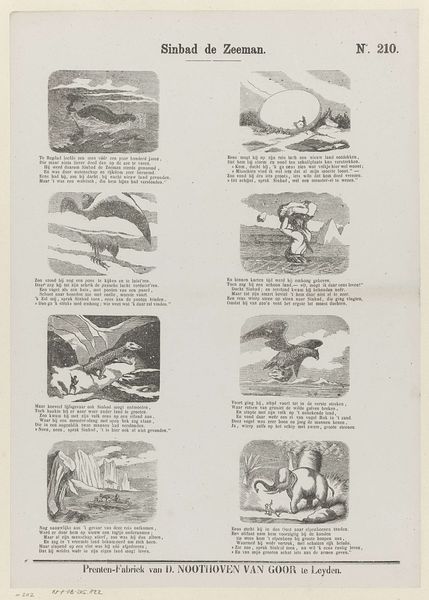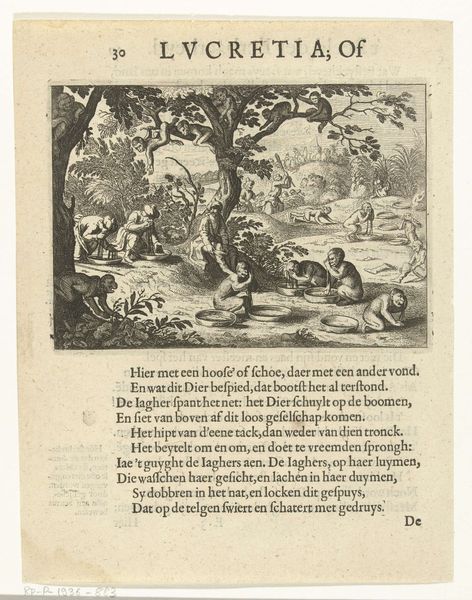
print, engraving
#
allegory
#
baroque
# print
#
figuration
#
line
#
history-painting
#
engraving
Dimensions: height 193 mm, width 300 mm, height 121 mm, width 277 mm
Copyright: Rijks Museum: Open Domain
Curator: Let's delve into this intriguing print, "Allegorie op de Noordse oorlog, 1700," or "Allegory of the Great Northern War, 1700" by Pieter van den Berge, housed at the Rijksmuseum. It's an engraving that dates back to a very turbulent time in European history. Editor: My first impression is chaos. A menagerie of creatures caught in conflict – lions, horses, an elephant, even eagles overhead. It’s quite densely packed, giving it a sense of immediate turmoil. Curator: Exactly. It’s a fascinating example of Baroque allegory, using symbolic figures to comment on the complex political landscape of the Great Northern War. The various animals likely represent the different powers involved in the conflict, with their struggles embodying the larger power dynamics at play. Understanding these allegories gives insight into the sociopolitical moment. Editor: It makes sense now that you point that out. Is it fair to say the elephant must symbolize one of the major powers then? How were viewers supposed to decipher such elaborate visual metaphor? I'd imagine a very select group of informed viewers at the time might fully grasp the intended message. Curator: Definitely a specific audience, familiar with the conventions of political allegory. Prints like these weren't just about disseminating information, but about shaping public opinion and constructing a particular narrative around the war. Think of how imagery gets used today by powerful influencers with large communities. Editor: So, it's a work designed to provoke particular thought among viewers, potentially manipulating opinion. It has strong contemporary resonances. Seeing that soldier attacking the elephant seems particularly charged, given historical and post-colonial interpretations we have today, regarding the symbolic treatment of nations and peoples in artwork. I wonder if the average person, without our scholarly context, could feel and pick that up nonetheless, even unconsciously. Curator: A very relevant consideration; the complexities surrounding these visual histories. Editor: It leaves you reflecting on how wars, conflicts, and history are presented to us. It feels pertinent that the visual language used to discuss warfare even three centuries ago could echo with concerns of bias and constructed perception now.
Comments
No comments
Be the first to comment and join the conversation on the ultimate creative platform.


